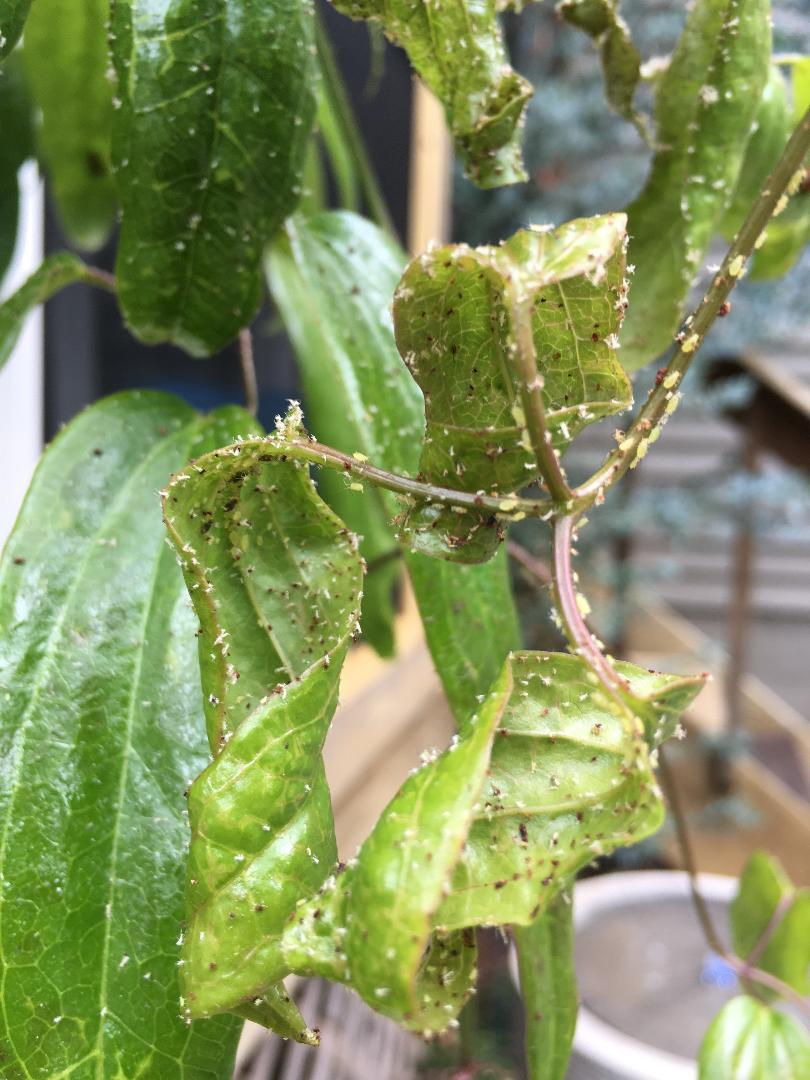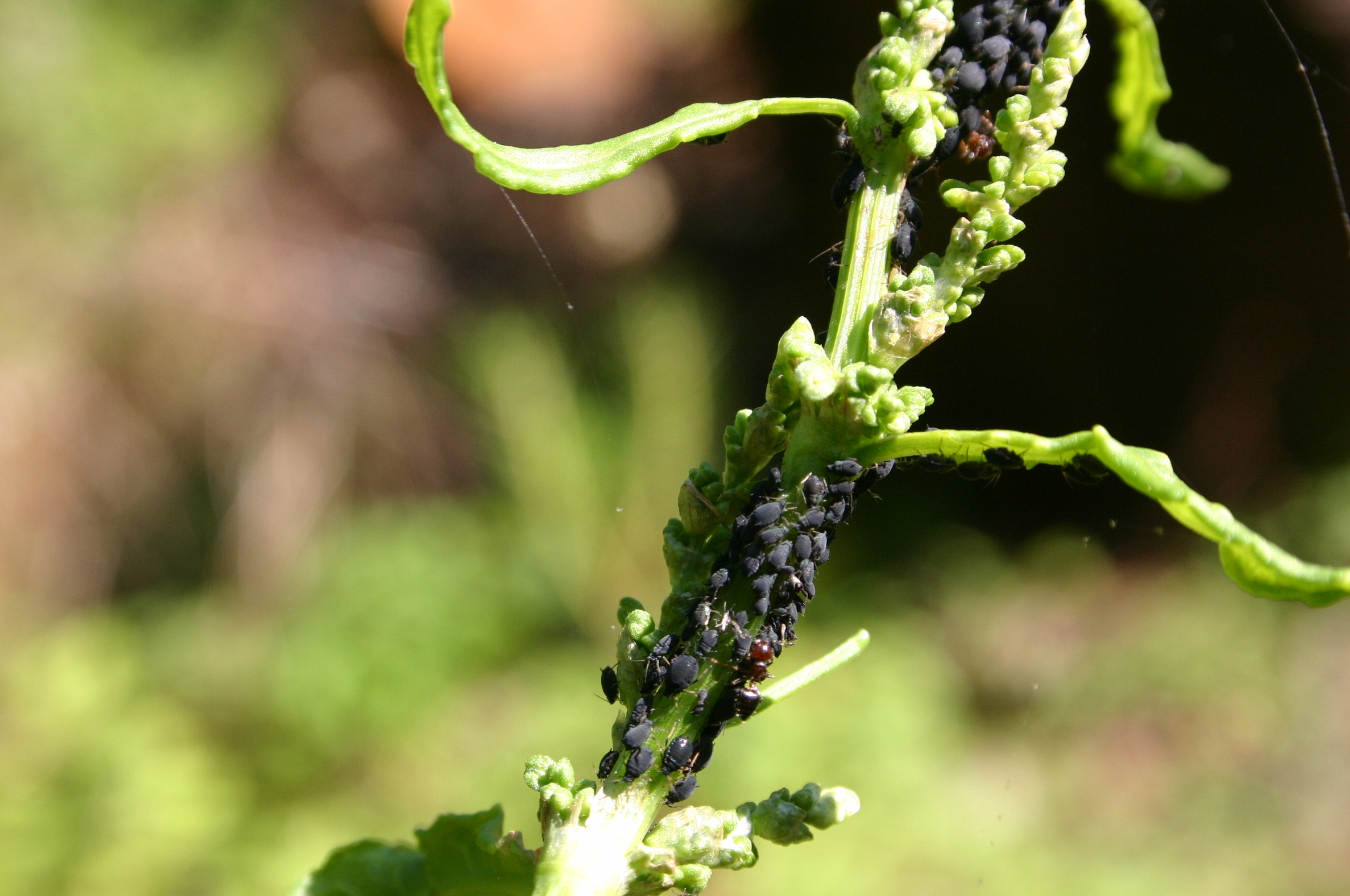To get rid of bugs on Clematis, follow these steps: prune affected areas, use insecticidal soap, and provide proper conditions for the plant. Clematis, a stunning flowering vine, can be a magnet for bugs that can damage its health and beauty.
Bugs such as aphids, spider mites, and scale insects can be particularly troublesome for Clematis plants. If left unchecked, these pests can weaken the plant and stunt its growth. However, there are ways to effectively control and eliminate bugs on Clematis.
We will discuss a few simple and effective methods that can help you get rid of bugs on your Clematis plant, allowing it to thrive and bloom to its full potential. So, let’s dive in and explore these strategies in detail.

Credit: www.walterreeves.com
Identifying Common Bugs On Clematis
Identifying common bugs on clematis is essential in taking effective preventive measures to get rid of them. Aphids are one of the most common pests that infest clematis. These small, soft-bodied insects can be green, black, or brown. They often cluster on the undersides of leaves and suck sap from the plant, causing stunted growth and distorted leaves. To control aphids, you can manually remove them by spraying a strong jet of water or by using insecticidal soap.
Spider mites are another pest that can infest clematis. They are tiny, web-spinning insects that suck the sap from the plant, causing yellowing and browning of leaves. To prevent spider mite infestations, you can regularly mist your clematis with water to increase humidity and regularly prune out infested leaves. In severe cases, you may need to use insecticidal soap or miticides.
Whiteflies are small, flying insects that suck the sap from clematis plants. They can be identified by their white, powdery wings. Whiteflies often cluster on the undersides of leaves and can cause wilting, yellowing, and stunted growth. To control whiteflies, you can use sticky traps, introduce natural predators like ladybugs or lacewings, or use insecticidal soap or horticultural oil.
Signs Of Infestation
Infestations in clematis plants can be identified through various signs. Stunted growth is a common symptom, where the plant fails to reach its expected height. This can be accompanied by distorted leaves that appear misshapen or have unusual coloring. Another indication is the presence of a sticky residue on foliage. This sticky substance, known as honeydew, is often secreted by sap-sucking insects like aphids or scale insects.
If you notice any of these signs on your clematis plant, it is crucial to take action promptly to prevent further damage. Identifying the specific bug causing the infestation will help determine the best course of action for getting rid of them effectively. Regular monitoring and maintaining a healthy environment for your clematis plants can also help prevent future infestations.
How to Get Rid of Bugs on Clematis: Step by Step Guide
Natural Remedies For Bug Control
One effective way to get rid of bugs on your clematis plant is by using natural remedies for bug control. These alternatives to synthetic insecticides are not only safer for the environment, but they also help to preserve the health of your plant. Organic insecticidal soap is a popular choice. Made from natural ingredients, this soap works to smother and kill bugs on contact.
Neem oil is another organic option. It is derived from the seeds of the neem tree and acts as a repellent against a wide range of pests. Lastly, introducing ladybugs to your garden can provide natural bug control. Ladybugs feed on aphids, mites, and other harmful insects, helping to keep your clematis plant healthy and bug-free.
Chemical Options For Bug Control
Chemical options can be effective for controlling bugs on clematis. One approach is to use systemic insecticides, which are absorbed by the plant and then ingested by the bugs when they feed. These insecticides are effective against a wide range of pests, including aphids, thrips, and whiteflies.
Contact insecticides, on the other hand, are applied directly to the bugs themselves. They work by either killing the bugs on contact or by disrupting their feeding and reproduction processes. These insecticides are often fast-acting and can provide quick relief from bug infestations.
Insecticidal sprays are another option for bug control. They can be applied directly to the leaves and stems of the clematis plant, targeting the bugs and their eggs. These sprays can be effective against a variety of pests, including spider mites, mealybugs, and scale insects.
Preventing Bug Infestations
Regularly inspecting plants is an essential step in preventing bug infestations on Clematis. By checking the leaves, stems, and surrounding areas, you can identify any signs of pests early on and take prompt action. Removing any visible bugs by hand or with a soft cloth is an effective way to control their population. Providing proper plant care is also crucial in bug prevention. Ensure that your Clematis receives adequate sunlight and water, as healthy plants are more resistant to infestations.
Additionally, you can encourage natural predators to keep bugs at bay. Ladybugs, lacewings, and spiders are beneficial insects that feed on pests and can help maintain a balanced ecosystem in your garden. By following these practices, you can effectively get rid of bugs on your Clematis without the need for harmful chemicals.
Removing Bugs By Hand
Removing bugs by hand is a simple and effective way to get rid of pests on your clematis plants. Pruning affected plant parts is the first step in this process. Carefully examine your clematis for any signs of pest infestation. Look for discolored leaves, small holes, and tiny insects crawling on the plant.
Squishing bugs manually is a quick and direct method to eliminate them. Wear gloves to protect your hands, then gently pinch and crush the bugs between your fingers. This method works well for larger pests, such as caterpillars and beetles.
Using a high-pressure hose can also be effective in removing bugs from your clematis. Direct a strong stream of water onto the affected areas of the plant, including the undersides of leaves. This will dislodge the bugs and wash them away.
Remember to regularly inspect your clematis for any new signs of infestation and take immediate action to keep your plants healthy and free from bugs.
Boosting Plant Health To Prevent Bugs
Proper watering techniques, appropriate fertilizing, and adequate sunlight are essential for boosting the health of your clematis plants and preventing bugs. When it comes to watering, it’s important to strike a balance. Overwatering can lead to root rot, which attracts pests, while underwatering can stress the plant and make it more susceptible to infestations.
Fertilizing appropriately is another key factor. Using a balanced fertilizer with a higher phosphorous content can help promote healthy root development and overall plant strength, making it less attractive to bugs. Remember to follow the instructions on the fertilizer package and avoid over-fertilizing, as this can cause more harm than good.
In addition, providing adequate sunlight is crucial for the overall health of your clematis plants. Clematis thrives in full sun or partial shade, depending on the variety. Lack of sunlight can weaken the plants, making them more vulnerable to pests.
By following these guidelines and giving your clematis plants the care they need, you can create an environment that discourages bug infestations and promotes the optimal growth and health of your plants.
Companion Plants To Deter Bugs
Companion planting is an effective way to naturally deter bugs from your clematis. Marigolds are one of the best companion plants for clematis due to their strong scent that repels a wide range of pests. They are particularly effective at deterring aphids and nematodes, which can damage the roots of the clematis. Nasturtiums, with their bright and colorful flowers, not only add beauty to your garden but also act as a sacrificial plant, attracting pests away from the clematis.
They are especially effective at deterring whiteflies and aphids. Another great companion plant is lavender – its aromatic fragrance helps to repel insects such as moths, fleas, and flies. Additionally, lavender can attract beneficial pollinators like bees and butterflies, which are essential for the healthy growth of clematis. Including these companion plants in your garden can help create a bug-free environment for your beautiful clematis.
Creating A Bug-free Environment
Keeping your gardening tools and containers clean is essential for creating a bug-free environment for your clematis. Bugs often hide in the nooks and crannies of dirty tools and containers, so make sure to clean them regularly. Use a mixture of soap and water to scrub away any dirt or debris, and don’t forget to sanitize them with a disinfectant spray.
Another way to deter pests is by using mulch. Spread a layer of mulch around the base of your clematis plants to create a barrier. This will help prevent bugs from reaching the plant and laying eggs. Organic mulches, such as wood chips or straw, work well for this purpose.
Regularly removing plant debris is also crucial in bug control. Bugs tend to hide in fallen leaves, dead flowers, or decaying plant material. By removing these debris, you eliminate potential hiding spots for pests.
By following these simple practices, you can create a bug-free environment for your clematis and enjoy a healthy, thriving garden.
Seeking Professional Help
If you are facing a persistent bug problem on your clematis, seeking professional help can be a good option. Consulting with a horticulturist who specializes in pest control can provide you with valuable insights and expert advice on how to effectively get rid of bugs on your clematis. They can identify the specific type of bugs infesting your plant and recommend the most suitable treatment options.
Hiring a pest control service is another option to consider. Professional pest control services have the knowledge, experience, and resources to effectively eliminate bugs from your clematis. They can use safe and eco-friendly methods to control the infestation and ensure the health and well-being of your plant.
Alternatively, you can also visit a local garden center for advice. The staff at the garden center are knowledgeable about various pests and diseases that affect plants, including clematis. They can guide you on the appropriate insecticides or pesticides to use, as well as provide tips on preventive measures to keep bugs away from your clematis.
Frequently Asked Questions For How To Get Rid Of Bugs On Clematis
How Do I Get Rid Of Spider Mites On My Clematis?
To get rid of spider mites on your clematis, you can use a mix of dish soap and water to spray the leaves, ensuring you cover both upper and lower surfaces. Repeat every few days until the mites are gone.
Prune and dispose of heavily infested parts if necessary.
How Do You Use Epsom Salt On Clematis?
To use Epsom salt on clematis, dissolve 2 tablespoons in a gallon of water. Apply the mixture to the soil around the base of the plant once a month during the growing season. This will replenish magnesium levels and promote healthy growth.
How Do You Control Blister Beetles On Clematis?
Control blister beetles on clematis by inspecting plants regularly, handpicking and disposing of beetles, avoiding heavy pesticide use, and using natural predators or traps. Prune damaged parts of the plant and provide adequate water and fertilizer to promote plant health.
Should I Put Lime On My Clematis?
No, you do not need to put lime on your clematis.
Conclusion
By following these effective methods, you can successfully eliminate bugs on your Clematis plants. Regular inspection and prompt action are crucial in preventing infestations. Utilizing natural remedies like neem oil and introducing beneficial insects can help control pests without harming the plant or the environment.
Remember to maintain proper watering and fertilization to keep your Clematis healthy and less attractive to bugs. With these strategies in place, you can enjoy a vibrant and bug-free Clematis garden.

